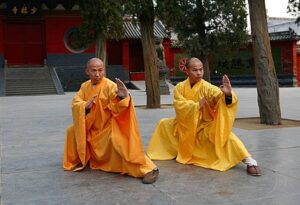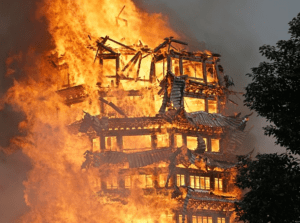
The Shaolin Temple, located in Henan Province, China, is famous for its deep-rooted history in martial arts. It served as a sanctuary for Buddhist monks who sought refuge and engaged in spiritual practice. The Temple is widely recognized as the birthplace of many martial arts styles and has been a hub for martial arts training for centuries. It has played a significant role in preserving and disseminating Chinese martial arts and Buddhist culture.
The name “Incense Shop Boxing” is associated with a legend and historical events involving the Shaolin Temple.

During the Qing Dynasty, the relationship between the Shaolin Temple and the ruling Qing government was complex and varied. There were instances of both support and hostility directed towards the temple and its monks. Around 1644 or 1732, forces from the Qing government attacked the Shaolin Temple in Henan Province. This attack resulted in the temple being set ablaze, leading to its destruction and the dispersal of the resident monks. The fire also caused the loss of valuable historical records and artifacts housed within the temple.
